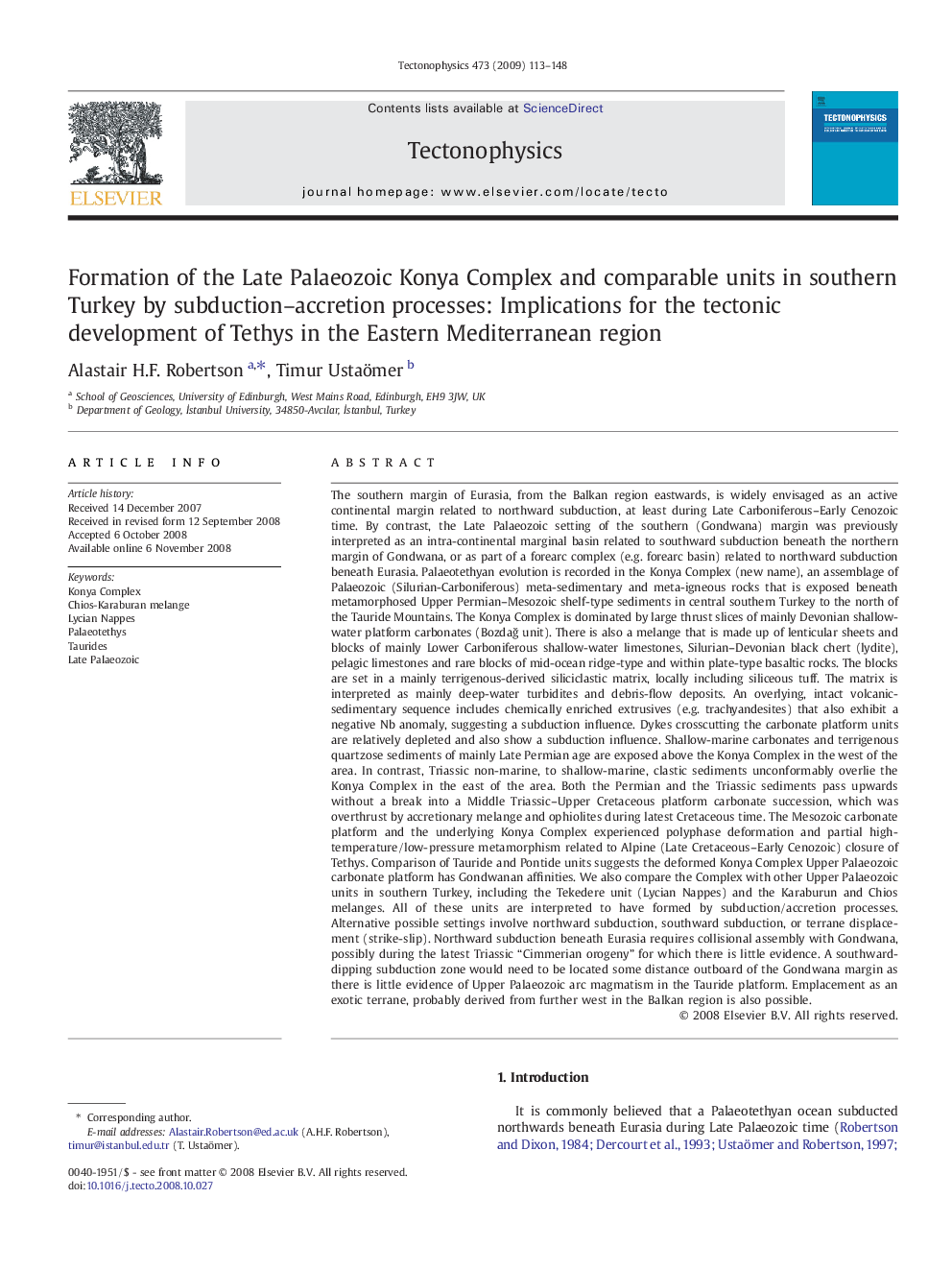| کد مقاله | کد نشریه | سال انتشار | مقاله انگلیسی | نسخه تمام متن |
|---|---|---|---|---|
| 4693998 | 1636889 | 2009 | 36 صفحه PDF | دانلود رایگان |

The southern margin of Eurasia, from the Balkan region eastwards, is widely envisaged as an active continental margin related to northward subduction, at least during Late Carboniferous–Early Cenozoic time. By contrast, the Late Palaeozoic setting of the southern (Gondwana) margin was previously interpreted as an intra-continental marginal basin related to southward subduction beneath the northern margin of Gondwana, or as part of a forearc complex (e.g. forearc basin) related to northward subduction beneath Eurasia. Palaeotethyan evolution is recorded in the Konya Complex (new name), an assemblage of Palaeozoic (Silurian-Carboniferous) meta-sedimentary and meta-igneous rocks that is exposed beneath metamorphosed Upper Permian–Mesozoic shelf-type sediments in central southern Turkey to the north of the Tauride Mountains. The Konya Complex is dominated by large thrust slices of mainly Devonian shallow-water platform carbonates (Bozdağ unit). There is also a melange that is made up of lenticular sheets and blocks of mainly Lower Carboniferous shallow-water limestones, Silurian–Devonian black chert (lydite), pelagic limestones and rare blocks of mid-ocean ridge-type and within plate-type basaltic rocks. The blocks are set in a mainly terrigenous-derived siliciclastic matrix, locally including siliceous tuff. The matrix is interpreted as mainly deep-water turbidites and debris-flow deposits. An overlying, intact volcanic-sedimentary sequence includes chemically enriched extrusives (e.g. trachyandesites) that also exhibit a negative Nb anomaly, suggesting a subduction influence. Dykes crosscutting the carbonate platform units are relatively depleted and also show a subduction influence. Shallow-marine carbonates and terrigenous quartzose sediments of mainly Late Permian age are exposed above the Konya Complex in the west of the area. In contrast, Triassic non-marine, to shallow-marine, clastic sediments unconformably overlie the Konya Complex in the east of the area. Both the Permian and the Triassic sediments pass upwards without a break into a Middle Triassic–Upper Cretaceous platform carbonate succession, which was overthrust by accretionary melange and ophiolites during latest Cretaceous time. The Mesozoic carbonate platform and the underlying Konya Complex experienced polyphase deformation and partial high-temperature/low-pressure metamorphism related to Alpine (Late Cretaceous–Early Cenozoic) closure of Tethys. Comparison of Tauride and Pontide units suggests the deformed Konya Complex Upper Palaeozoic carbonate platform has Gondwanan affinities. We also compare the Complex with other Upper Palaeozoic units in southern Turkey, including the Tekedere unit (Lycian Nappes) and the Karaburun and Chios melanges. All of these units are interpreted to have formed by subduction/accretion processes. Alternative possible settings involve northward subduction, southward subduction, or terrane displacement (strike-slip). Northward subduction beneath Eurasia requires collisional assembly with Gondwana, possibly during the latest Triassic “Cimmerian orogeny” for which there is little evidence. A southward-dipping subduction zone would need to be located some distance outboard of the Gondwana margin as there is little evidence of Upper Palaeozoic arc magmatism in the Tauride platform. Emplacement as an exotic terrane, probably derived from further west in the Balkan region is also possible.
Journal: Tectonophysics - Volume 473, Issues 1–2, 20 July 2009, Pages 113–148